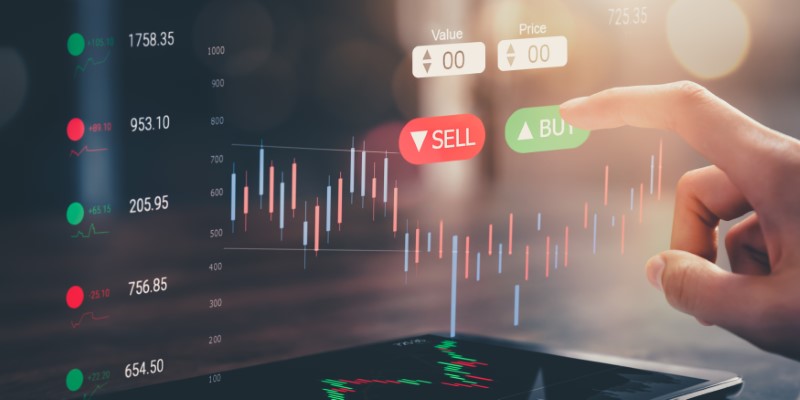Navigating the Ups and Downs: Why Volatility Is Important for Investors
Have you ever been on a rollercoaster? That exhilarating mix of excitement and fear as you plunge through twists and turns, feeling the adrenaline rush with each unexpected movement. Investing in the financial markets can feel like a rollercoaster ride, especially regarding volatility. But contrary to what you might think, volatility isn't something to fear or avoidit's essential for investors.
They understand why volatility matters and can confidently help you navigate the market's ups and downs. So buckle up, and let's explore why volatility is so important for investors.
What is Volatility?
Volatility refers to the degree of variation or fluctuation in the price of a financial instrument, such as a stock, bond, or commodity, over time. It measures the dispersion of returns for a given asset, indicating the uncertainty or risk associated with its price movements. High volatility suggests the asset's price can change dramatically quickly, while low volatility implies steadier and more predictable price movements.
Traders and investors closely monitor volatility as it influences trading strategies, risk management decisions, and portfolio diversification efforts. Various factors can influence volatility, including market sentiment, economic indicators, geopolitical events, and supply and demand dynamics. Understanding and effectively managing volatility is crucial for mitigating risks and maximizing returns in financial markets.
Why Investors Should Care:
Imagine you're planning for retirement or saving up for your child's education. You want your investments to grow steadily over time. Volatility can make that journey bumpier. But here's the thing: without volatility, there would be no opportunity for significant returns. It's like the spice in your favorite dish too little, bland, too much, and overwhelming. Volatility adds flavor to the market, allowing investors to seize opportunities and earn higher returns.
Risk and Reward:
Volatility and risk are indeed intertwined in the world of investing. While high volatility can be unsettling for some investors due to the increased uncertainty, it also opens doors to potentially lucrative opportunities. Consider a stagnant market where prices barely budge; it offers little room for significant gains. Contrast that with a volatile market, where price fluctuations create openings for profit.
Embracing volatility involves acknowledging the potential for greater returns, albeit with a heightened level of risk. In such markets, astute investors can capitalize on price swings by buying low and selling high or engaging in options trading or volatility trading strategies. However, it's crucial to approach volatility with a disciplined investment strategy, thorough research, and risk management techniques.
Diversification across asset classes and monitoring market conditions can mitigate some of the inherent risks associated with volatility. Ultimately, embracing volatility means being prepared for the market's ups and downs while staying focused on long-term investment objectives.
Pricing in Uncertainty:
Volatility is a barometer of market sentiment, reflecting the ebb and flow of investor confidence and uncertainties. Price swings encapsulate the assimilation of new information, such as economic indicators or geopolitical events, impacting asset valuations. For investors, navigating volatile markets requires a nuanced understanding to discern genuine shifts in supply and demand dynamics from transient noise.
By deciphering volatility patterns, investors can gauge the underlying fundamentals and discern opportune moments for strategic actions, whether seizing undervalued assets or safeguarding against downside risks. In essence, embracing volatility as a tool for price discovery empowers investors to navigate turbulent waters with greater understanding and conviction.

Seizing Opportunities in the Market:
Often feared by some investors, volatility presents opportunities for others through active management. This approach capitalizes on market fluctuations by strategically buying undervalued assets in downturns and selling overvalued ones during peaks.
Active management can outperform passive strategies by constantly adapting to changing conditions, particularly in volatile environments. Embracing volatility as a means for tactical maneuvers allows investors to harness its fluctuations, maximize returns, and navigate uncertain market landscapes with agility and insight.
Building a Diversified Portfolio:
"Diversification serves as a vital shield against the unpredictable nature of financial markets. By allocating investments across various assets, sectors, and geographic regions, investors minimize their exposure to any single risk. This strategy acts as a safety net, softening the impact of market fluctuations and preserving capital in the face of volatility.
Whether it's stocks, bonds, real estate, or commodities, a diversified portfolio ensures resilience against adverse market conditions and enhances the potential for long-term growth. Ultimately, it's about spreading risk intelligently to safeguard wealth and pursue consistent returns.
Emotional Roller Coaster:
Volatility can be nerve-wracking. When prices plummet, fear sets in, and panic selling ensues. Conversely, euphoria takes over during bull markets, leading to irrational exuberance. These emotional swings can cloud judgment and lead investors to make impulsive decisions. However, seasoned investors recognize that volatility is part and parcel of the investing journey. Instead of reacting impulsively, they stay disciplined and stick to their long-term strategies.
Psychological Resilience:
Navigating the turbulent seas of investing requires acknowledging volatility as an inherent element. This recognition fosters psychological resilience, enabling investors to confront market fluctuations with composure and logic. By embracing volatility's presence, individuals can sustain discipline amidst the allure of fear and greed.
This mindset shift promotes adherence to long-term investment strategies, fostering steadiness amid uncertainty. Ultimately, embracing volatility transforms the emotional rollercoaster of investing into a journey marked by resilience and informed decision-making, laying the foundation for enduring financial success.

Conclusion:
In conclusion, volatility in financial markets is akin to the exhilarating yet unpredictable journey of a rollercoaster ride. While it can evoke fear and excitement, understanding its significance empowers investors to navigate confidently. Volatility not only presents risks but also offers opportunities for higher returns.
Embracing volatility requires disciplined strategies, diversified portfolios, and psychological resilience to withstand emotional swings. Leveraging volatility as a tool for informed decision-making allows investors to steer toward long-term financial success amidst market uncertainties.












